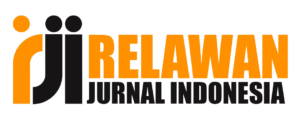Implementation of Learning Media with Augmented Reality for Introduction to Healthy and Nutritious Food
Abstract
The current application of Augmented Reality (AR) technology in various fields such as games, social media, business, military, medicine and including education. This research will utilize AR in learning for grade 3 students at Barujulat 1 Public Elementary School. The problem is that the 2013 revision of the 2018 curriculum is used and uses books as study guides. From interviews with teaching teachers, students have difficulty understanding various types of healthy food related to material according to the syllabus in sub-theme 2 of learning 3 about Food Important for Health, and this condition is exacerbated by the Covid-19 pandemic situation which requires students to study online and independently at home. The purpose of this study was to make a learning application for the introduction of healthy and nutritious eating with AR for class 3 of SDN 1 Barujulat. The method used in this research is the ADDIE development method developed by Dick and Carry. The results of this study, according to the syllabus used, can improve and facilitate students' understanding in participating in learning about important foods for health. The test results for grade 3 students were 21 students/respondents, it was found that 52% of respondents said this application could increase interest in learning, and 76% of respondents said that this application could facilitate understanding of healthy and nutritious food learning materials.
References
[2] N. Harefa, “Learning Management System Aplikasi E-Learning Untuk Pembelajaran Online Dan Blended,” no. September 2020, 2020, [Online]. Available: http://repository.uki.ac.id/1927/1/BukuLearningManagementSystem.pdf.
[3] A. F. Ramadhan, A. D. Putra, and A. Surahman, “Aplikasi Pengenalan Perangkat Keras Komputer Berbasis Android Menggunakanaugmented Reality (Ar),” J. Teknol. dan Sist. Inf., vol. 2, no. 2, pp. 24–31, 2021.
[4] M. F. Mahmudi and U. P. Raya, “Penerapan teknologi augmented reality pada dunia pendidikan,” no. April, 2022.
[5] B. Kraut and J. Jeknić, “Improving education experience with augmented reality (AR),” 2015 38th Int. Conv. Inf. Commun. Technol. Electron. Microelectron. MIPRO 2015 - Proc., no. May, pp. 755–760, 2015, doi: 10.1109/MIPRO.2015.7160372.
[6] G. Singaravelu, “Augmented Reality (AR) in Education – A New Prospect,” Strad Res., vol. 8, no. 6, 2021, doi: 10.37896/sr8.6/011.
[7] R. Maulana Aziz, “Pemanfaatan Virtual Reality di Bidang Pendidikan,” Teknol. Inf., no. October, pp. 0–7, 2020.
[8] A. N. Zahra and P. T. Informatika, “Pemanfaatan teknologi informasi di bidang pendidikan virtual reality edugame sejarah cadas pangeran,” pp. 1–4, 2022.
[9] H. R. Babaei, P. L. Mohurutshe, and A. Habibi Lashkari, “Image-processing with augmented reality (AR),” Int. Conf. Graph. Image Process. (ICGIP 2012), vol. 8768, no. October, p. 87684G, 2013, doi: 10.1117/12.2011323.
[10] V. Ferrari, G. Klinker, and F. Cutolo, “Augmented reality in healthcare,” J. Healthc. Eng., vol. 2019, no. April, 2019, doi: 10.1155/2019/9321535.
[11] S. Bhambere, S. Hirve, B. Abhishek, H. Snehal, and A. Prof, “Application of Augmented reality (AR) for Surgery and Patient Care,” Int. Res. J. Eng. Technol., no. May, 2021, doi: 10.6084/m9.figshare.14602659.v1.
[12] H. Judul, F. T. Industri, and U. I. Indonesia, “Aplikasi Augmented Reality Berbasis Android,” no. November, pp. 0–9, 2018.
[13] M. S. Hadi, S. Soraya, M. Rosanensi, and B. C. Herawati, “Media Pembelajaran Reproduksi Tubuh Manusia Menggunakan Augmented Reality ( Studi Kasus : SMAN 2 Selong ) Human Body Reproduction Learning Media Using Augmented Reality ( Case Study : SMAN 2 Selong ),” vol. 3, no. 2, pp. 123–134, 2021, doi: 10.30812/bite.v3i2.1448.
[14] A. A. Rusmiyati, A. Rasyid, K. Aini, F. Budiyono, and ..., Metodologi Penelitian: Panduan Praktis Penelitian Masa Kini. 2021.
[15] Y. H. Rayanto and Sugianti, Penelitian Pengembangan Model Addie Dan R2d2: Teori & Praktek. Lembaga Academic & Research Institute, 2020.

This work is licensed under a Creative Commons Attribution 4.0 International License.











